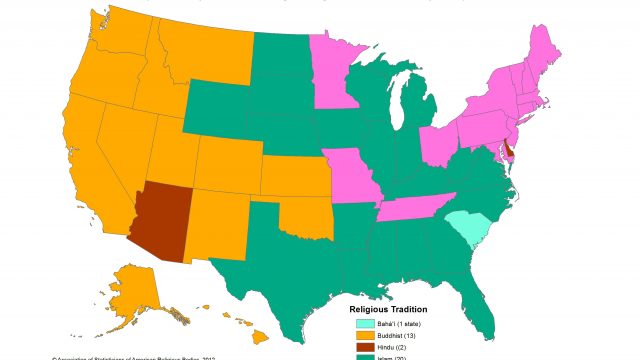North Dakota's Second Largest Religion Is…Islam?

According to the Washington Post (which is responsible for the map above) and based on a survey by the Association of Statisticians of American Religious Bodies, the second largest religion in North Dakota is Islam.
Surprised?

Of course, that’s a little misleading because in order to arrive at that conclusion the Post lumped all the different flavors of Christianity together, and that presents a pretty skewed picture. If you combine all of the Christian denominations and affiliations (including groups like the Mormons, which some claim aren’t Christian) you get 86 percent of North Dakota’s population according to a 2001 survey. That same survey found that Islam, Judaism, Hinduism and Buddhism combined for just 4 percent of the population.
Lutherans make up the biggest chunk of North Dakota’s Christians at 36 percent, followed by Catholics at 30 percent.
So, Islam isn’t so much North Dakota’s second largest religion as it’s the largest of the sliver of non-Christian religions in a state that is overwhelmingly Christian. Unless you want to count Mormonism or the Adventists as non-Christian. Some do. I’ll leave that debate up to the theological scholars.
Still, Islam does have a long history in North Dakota. Believe it or not, but the first mosque ever built in America stood near Ross, North Dakota. It was built by Syrian-Lebanese immigrants who had moved to North Dakota to take advantage of the Homestead Act.
Here’s a second map that’s pretty interesting. It shows the largest non-Christian tradition in each county across the nation. As you can see, in North Dakota it’s Ward County (Minot), Burleigh County (Bismarck) and Cass County (Fargo) that have the largest Islamic populations while Grand Forks County has a large Jewish population.






